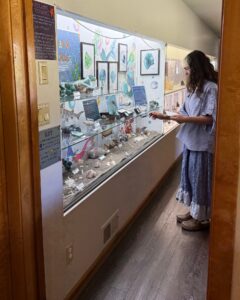
Curiosity Knows No Limit
give todayYou can help us to continue to grow and serve our community. Any amount is appreciated, LEARN MORE.
Admission
Members: FREE ADMISSION
Non-Member Admission Rates:
- Adults: $18.00
- Seniors (60+): $15.00
- Veterans & Active Military: $15.00
- First Responders: $15.00
- Educators: $15.00
- Students (6-College): $10.00
- Children (up to 5 years): FREE
Free Tours and Unguided Experiences: A limited number of free tours and unguided experiences are available from May-November 2025. Click here to find out more about our free tour opportunities.
Grounds & Nature Trails – The grounds and nature trails are FREE for all to explore. Click here to find out more about our grounds and nature trails.
Museums for All: Receive a reduced rate admission of $3 per person when you present an Electronic Benefit Transfer (EBT) card and a valid form of photo ID. Rate is valid for up to four individuals per EBT card. Museums for All is a signature access program of the Association of Children’s Museums (ACM) and the Institute of Museum and Library Services(IMLS).
Blue Star Museums: Free admission to active duty military, National Guard and Reserve military personnel and up to 5 family members when they visit the Museum between Armed Forces Day and Labor Day with the presentation of a valid military id.

The Rice Northwest Museum of Rocks and Minerals exists to engage, inspire, and educate
on the wonder and complexity of our Earth.
Support Provided By




And Our Many Individual Donors, Thank You









